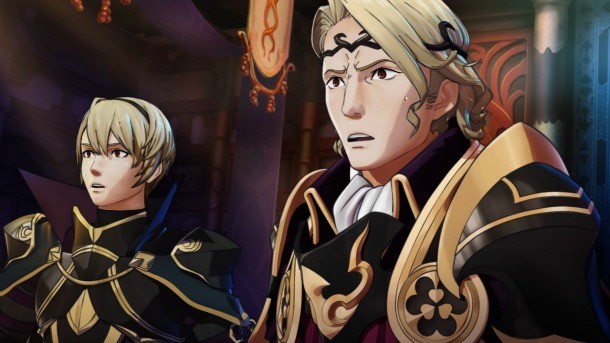Our extra-large special edition is here. Subscribe today and receive the 25% longer issue at no extra cost!
Fire Emblem Fates: Conquest Review

Fire Emblem Fates: Conquest is not a kind game. It’s not cruel for the sake of being cruel; it expects greatness from its players. The trick is earning that greatness. It thrives most when it’s putting players in difficult positions, forcing them to fight off a seemingly insurmountable force with only a ragtag group of soldiers. Fire Emblem makes these moments hit even harder because the soldiers you command are not just nameless units marching across a field but are instead people with well-rounded personalities, capable of falling in love with one another, becoming your best friend, or dying a horrible death because you made the wrong play.
Conquest tells an alternate version of the story seen in Fire Emblem Fates’ other installment, Birthright. Instead of your hero siding with the noble nation of Hoshido, you fight alongside the warriors of Nohr. It’s a dark fantasy epic filled with political intrigue that had me questioning who, and what, I was fighting for all the way through the campaign. Where Birthright forces players to answer tough questions while making tragic sacrifices for the good of a nation, Conquest is not merely content with philosophical complications. It twists the knife by making its campaign more difficult (and more complex) than Birthright’s straightforward quest.
Both Conquest and Birthright make it fun to tell your own story through your decisions in battle, but the games are rewarding in different ways (for more specifics about how the basic mechanics function, read our review of Birthright). Where Birthright offers a challenging experience that can be overcome by anyone with patience, Conquest is more vicious. It isn’t necessarily better than the combat in its companion title, but it provides a different flavor of challenge, forcing you into corners and expecting you to strategize your way out. It’s a nerve-wracking experience (especially when you lose characters), but surviving each map is its own kind of thrill and made me feel like a battle-hardened genius.
While the essential systems are the same in both games – the castle, battles, marriage – decisions bear more weight in Conquest, since you can’t grind experience points. In other words, you can’t build up an unstoppable force of heavy hitters through scouting out battles on the map like you can in Birthright. Instead, you’re limited to doing the campaign missions, castle invasions, and the occasional challenge battle or sidequest. This makes brute-forcing your way through the campaign difficult, adding more tension and placing more importance on strategy.
Outside of the scarce resources, Conquest also treats its battles differently. Most maps have specific goals you have to accomplish, like crossing from one side of the map to the other, or killing a certain enemy in a limited number of turns, or seizing a structure on the map. It’s a nice mix-up for players who want a little more of a challenge than the more straightforward “kill all bad guys” objectives Birthright offers.
While both versions of Fates use the same maps, they’re often occurring in different places of each game’s respective story, and they’re almost always happening in a different tactical context. For example, near the end of Birthright, you fight inside a crumbling castle with acid puddles everywhere that damage any unit who walks across it. In Conquest, you play that same castle level near the beginning, but it’s not falling apart or filled with acid and you have to capture a specific tile instead of wiping all the enemies off the map. These different situations ensure that familiar areas present new challenges, so you don’t feel like you’re fighting identical battles.
Like Awakening and Birthright, Conquest is generous with difficulty options. In Classic mode, permadeath is in play, so your units can die forever. The other options remove permadeath and, depending on which one you choose, revive characters after battle or even immediately return them to the battlefield. This flexibility means players who are more concerned with absorbing than story than conquering its challenges can cruise through the campaign on an easier setting – though they will miss what makes the experience unique.
It’s built on the same great foundation, but Conquest is more than just a harder version of Birthright. It creates a consistently tense journey with few lulls. I spent the majority of Conquest’s campaign feeling like hope was some distant dream as I fought tooth-and-nail with limited resources against armies that vastly outnumbered my untrained troops. The campaign is a grueling challenge all the way through, but every time I snatched a win from the jaws of defeat I felt an undeniable surge of satisfaction and pride, one that made my victories that much sweeter. If that sounds fun to you, Conquest is the ideal way to play Fire Emblem Fates. If you want all of the fantastic gameplay with less pressure, don’t feel any shame about sticking to Birthright. You can’t go wrong either way.

Get the Game Informer Print Edition!
Explore your favorite games in premium print format, delivered to your door.
- 10 issues per year
- Only $4.80 per issue
- Full digital magazine archive access
- Since 1991









